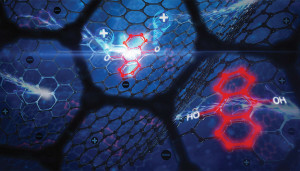
The modified graphene aerogels are promising for high-power electrical energy storage applications due to their high surface area and excellent conductivity.
Credit: Ryan Chen
We all know the buzz around graphene, but now researchers from Lawrence Livermore National Laboratory have found a way to improve upon this ultra-light material to boost the efficiency of your personal electronics.
The team at Lawrence Livermore have turned to graphene aerogel for enhanced electrical energy storage. This new generation of graphene has the potential to smooth power fluctuations in the energy grid, among other things.
This from Lawrence Livermore National Laboratory:
The team found that graphene aerogel-based supercapacitor electrodes could be particularly useful in the electric vehicle sector because they feature high surface area, good electrical conductivity, chemical inertness and long-term cycling stability. Energy storage systems for electric vehicles have especially demanding requirements because they must combine high power and energy density, cyclability, safety and low cost. Supercapacitors (also known as ultracapacitors or electrical double-layer capacitors) can help to meet these requirements due to their high power density and excellent cycling stability.
When comparing this aerogel-based supercapacitor to the typical carbon-based ones, the new generation could provide new advantages, such as controlling density and pore size distribution and increasing conductivity due to carbon linkers between the active carbon sheets.
You can find the researcher in the November 14 issue of the Journal of Materials Chemistry A.
See what other graphene research is being published in our Digital Library. You can also sign up for our e-Alerts, which will notify you when new publications are published online. Sign up now for free.


